A shot of the Kiwiprop feathered under sail. Taken with the GoPro Hero camera
If you have a sailing boat one of the best things you can do to make it go better is to fit a feathering or folding prop which causes much less drag when you are sailing. If you’ve ever stuck your hand in the water when moving along, you’ll know that a lot of drag is produced. Imagine now that three bladed fixed prop is like having three hands in the water dragging all the time. At high speeds the effect is reduced by brute force but at low speeds the drag of a prop can make the difference between sailing or having to fire up the ‘iron topsail’.
A simple way to reduce drag on yachts is to fit a two bladed prop. It’s a simple and cost effective solution but by reducing drag, you reduce area and this makes the boat much harder to stop and may mean that you are unable to power into a rough head sea when you need to. Two bladed props can also cause vibration as the blades pass the deadwood of the hull. If you have a fin keeled yacht with a prop sticking out all on its own a two bladed prop will work much better but it is still a compromise.
‘Doolittle’ my Dana 24 was fitted with a 15” two bladed prop from new and it worked fine it just couldn’t stop the boat very well. Even full revs failed to do the trick. It seems there is no substitute for blade area. It was clear that a more efficient prop was called for so I began looking into feathering and folding props.
A folding prop is one whose blades swing out when motoring but fold like a closing flower when sailing. A feathering prop is one whose blades do not fold but rotate around an axis from one direction to another. Each design has it’s good and bad points but you may find like I did that the extra length of a folding prop just isn’t an option if you have a propeller aperture or a rudder just behind the prop.
Having a prop aperture limits choices and can cause problems
So this is the first question you need to ask when considering buying a new prop. There are an awful lot of folding and feathering props out there so being able to narrow the choice is actually very helpful.
Each design has compromises and will do certain things better than others. Some may work better motoring than others but they may have more drag under sail as a consequence so it’s important to decide what features matter to you. Here are a few examples of what might matter:
Prop walk I don’t know why, but many sailors deem this to be an undesirable feature in a propeller but personally I like prop walk. I find it helps when manoeuvring. What is prop walk? Imagine that the boat is stationary in still water (no current) and there is no wind blowing. There are no external forces acting on the boat so it will remain in place. When you go into astern and accelerate, your boat will move backwards but it will also move to port or to starboard depending on the direction of the prop (determined by the gearbox). Prop walk is caused by a number of things but blade shape, pitch and hull shape are the main reasons. Many prop makers claim reduced prop walk with their props but this can be misleading as the shape of your hull and the position of the prop may well mean that you will still have prop walk.
As I said, I like prop walk but if you don’t there are ways to reduce it. For example, accelerating gently with less revs and letting boat speed build slowly will reduce prop walk considerably. If you want more prop walk, gun the engine when the boat has no way on it and you will clearly see the effect as the whole boat steps sideways. The fact that a prop is claimed to reduce prop walk is of no interest to me. Remember that every ‘plus’ point is achieved at the loss of another.
Power astern
One of the reasons why fixed props do not perform well in astern is because the blade shape is only optimised in one direction. If you look at a fixed propeller blade you will see that the angle of the leading edge changes from being at quite an angle at the base of the prop to a very fine angle at the tips. This is because the blades spin faster at the tips than at the base. You can see this in most propeller blades , including wind generators and wind mills.
So fixed blades work well when going forwards as the leading edge angle is optimised so that it attacks the water all along it without stalling or cavitating but the opposite is true when the blade spins in the other direction. There’s a lot to be said for a fixed blade prop. They can work efficiently when motoring forwards and they are simple with no moving parts to go wrong. They need no greasing or maintenance just an anode change every year.
Folding and feathering props have blades which work equally well in forwards and astern. They do this by compromising on the shape and therefore efficiency of the blade. generally they have blades which are much flatter. A flatter blade will cause less drag when sailing too. They generally work better in astern than fixed props because the blade shape, although compromised, is still better than an optimised blade working badly backwards.
Many companies make two bladed feathering and folding props but for real stopping power you need three blades. I confess I don’t really see the point of these props. They must have less drag when sailing but not much more than a three blader since the blades all rotate to offer the least resistance anyway. These props must be for the most serious of sailors who care more about reducing drag when sailing than anything else.
Noise and vibration
What kind of prop and shaft installation do you have? If you have a propeller aperture then you are likely to have all sorts of problems from finding a prop that will physically fit in the space (and fold or feather even with the rudder hard over) to prop walk and noise and vibration generated by the shape of the hull.
The most likely noise you will hear is from cavitation which (very simply put) is bubbles created by the prop. Click here to read more about cavitation. It sounds like bubbling and hissing. Often feathering or folding props cavitate initially but as the boat speed increases the cavitation will drop off.
There’s not much you can do to stop this. You can try a finer pitch on the blades and you can ensure that the blade tips are as far away as possible from the hull but if that doesn’t work you might have to consider a different propeller. I had this issue with the Kiwiprop and in the end decided to change for something more substantial. You can read my review of the Variprop 4 blade feathering prop here
This shot clearly shows a ring of unwanted cavitation around the prop. This cavitation creates a lot of unpleasant noise. Taken with a GoPro HD Hero camera
Vibration will probably come from the fact that the blades must pass behind the deadwood of the hull on every revolution. Props work best when they have clean water to turn in. If you have a propeller aperture then your prop will be working in turbulent water for much of the time. The more blades you have the better.
As folding and feathering props wear with age, there will be more play in the blades and so they are likely to make noise or cause vibration.
Performance under sail
No feathering or folding prop offers zero drag but they do reduce it considerably, some more than others. The folding props probably offer the least resistance as the blades fold like a closed flower and are thus more hydrodynamic than the other types. Also the folding mechanism is simpler and generally the hub is much smaller than feathering props.
One factor not often recognised when considering drag is the angle of the propshaft. Because most feathering props have their blades linked it means that not all the blades can fully feather at the same time. In the real world this is not much drag but it helps to understand all the same. Most engines are installed at a slight angle so it’s worth bearing this in mind.
The exception to this rule are saildrives which are generally mounted straight but they require a different prop mounting and not all the makers offer a prop for saildrives.
A 3 blade Variprop German feathering prop mounted on a saildrive leg. Looks like a nice piece of engineering.
In any case if you are coming from a fixed three bladed prop, the reduction of drag under sail is massively improved regardless of the folding or feathering prop you choose.
With a feathering or folding prop you will find that you can sail in light airs whereas before you could not. Just not having that drag means that the boat carries its way better and can build up speed much easier. When I had the fixed two bladed prop I was unable to sail to windward in light airs against a choppy sea. The feathering prop made it possible to do this. The boat would still pitch but the way was not lost.
Performance under engine
For performance under engine you need blade area. Three blades are better than two. Even three compromised blades are better than two optimised blades so most folding and feathering props will offer superior performance over a two blade fixed prop simply because there is more blade area. If you are coming from a fixed three blader the difference may not be so great.
Most folding props cannot be adjusted easily for pitch. It is possible but it will probably have to be returned to the maker to be done. The advantage of most feathering props is that the pitch can be adjusted fairly easily. This means that you can adjust it to suit your boat.
When a propeller is supplied for your boat, the maker will do calculations based on the hp of the engine, the reduction ratio of your gear box, the length of the boat and the space available for the prop. They will aim to get your boat moving at hull speed at maximum revs.
This is a compromise situation. Often an engine warranty will insist that any prop fitted must allow the engine to reach maximum working revs. This is so that the engine is not overloaded. An overloaded engine is a very bad thing. Unburned fuel will be washing oil from the bores and the engine will wear very quickly.
Also the black soot that comes out of the exhaust will pollute the sea and cover the back of your boat in black grime which is very hard to remove. It will clog up your exhaust and further reduce engine efficiency and reliability.
However the question remains, do you want to run your engine at high revs when you are cruising? Personally I do not. I would much rather have lower revs for the same boat speed as it makes the voyage much more pleasant and you will use much less fuel and increase your range.
This is why it is good to have adjustable pitch. It means that you can obtain cruising speed at lower engine revs by increasing the pitch on the prop. The down side is that you will not be able to reach maximum revs and if you try you will be overloading the engine.
The Dana 24 has a hull speed of about 6.5 knots but it needs a lot of power to do this as it’s a heavy boat. It is much easier to push along at about 5 knots which is a perfectly respectable cruising speed allowing 120 miles a day. By adjusting the pitch I can get the boat to do 5 knots with only 2200 rpm. It no longer revs to 3600 rpm but will get to 3400 rpm so it’s not far off the original.
This allows quieter motoring as I am using less revs and much better fuel consumption. After every 24 hours of motoring I run the engine at full power for half an hour to blast out any soot that might have built up due to running the engine at lower revs.
There are some who adjust the pitch right down to get a good cruising speed at much lower revs. The beauty of an adjustable pitch prop is that you can experiment until you find a setting that you like.
Easy pitch adjustment
Most feathering props offer a way of adjusting the pitch but not many allow easy adjustment with the boat in the water. Since the adjustment of the pitch is so critical I consider this a very important feature in a prop. I want to be able to dive down with an Allen key and easily and quickly adjust the pitch.
The Kiwiprop has adjustable pitch but each blade is adjusted independently which so great care must be taken to do them all the same. If the blades come out of adjustment you will invite noise and vibration. It cannot be adjusted in astern and has a fixed pitch which is very course and has caused problems with lower powered engines.
The ideal prop has a simple ‘one screw’ indefinite adjustment for all the blades in both forwards and astern.
Rope catching
A feathered prop is less likely to pick up a lobster pot or a rope but with a stowed folding prop it’s almost impossible as the rope will simply slide along it. If you sail in an area of fishing buoys or lobster pots maybe this is a very strong argument for having a folding prop if you can fit one.
Ease of fitting
This isn’t a deal breaker for me if the prop has to be assembled in place as it’s only done once and then forgotten but luckily many props are designed to simply slide onto to the old tapered shaft. What you may find is that the shaft will need to be cut down as often feathering props’ hubs are longer.
Variprop 4 blade prop in a very small aperture. Owner claims it works beautifully.
Rarely is fitting a new prop straightforward, especially if you have a prop aperture as space will be seriously limited. Check that the blades cannot touch the rudder when it is hard over.
Ease and cost of maintenance
Most feathering props need lubrication of some sort but many folding props do not. Again, this is not a deal breaker if the boat has to come out of the water to allow the prop to be maintained and greased because most people take their boats out of the water every year anyway.
Almost all props need an anode to protect them against electrolysis. Mostly they are custom made and therefore costly. The problem with most is that they corrode around the screw holes, the screws then come loose and the anode can start rattling about making noise or worse, it can fall off and then your expensive prop is no longer protected from corrosion.
The better prop makers solve this issue by fitting stainless sleeves to the anodes but of course this adds cost and it probably means you’ll have to buy the maker’s own brand which won’t be cheap.
Materials
Most props are made from bronze but the Kiwiprop is made of stainless steel and in theory does not need an anode but if you have a problem somewhere it may cause the prop to corrode. Often marinas have large anodes fitted to the pilings and they can cause havoc with metals under the water line. Sometimes a neighbouring boat can cause problems. Far better to fit an anode just in case. The Kiwiprop does not have an option to fit an anode.
The Kiwiprop has plastic blades which cannot corrode and have the added advantage of being able to be painted with antifouling. You can of course paint any blade but paint does not stick well to metals.
The Australian Autostream prop is made entirely of stainless steel which is stronger than bronze and allows thinner lighter blades. Most other props are made of bronze.
Guarantee
Most offer a year but the more serious props like the Variprop offer 5 years so if this is important to you it might make a difference to the prop you ultimately choose
As far as I know only Maxprop will allow you to try a prop and take it back if you don’t like it.
Making a choice
This is very hard. I chose the Kiwiprop because I liked the idea of adjustable pitch. The plastic blades can be antifouled and unlike metal blades the paint stays on so the prop doesn’t foul during the season. A fouled prop will destroy motoring and sailing performance while increasing dramatically fuel consumption so this was important. It was well priced too which was useful.
Sadly it was noisy and nothing I did made a difference. After the guarantee had run out I began having problems with it going into astern. The solution was to buy a new set of blades for $600.
I liked the idea of less weight too but in the end it was not reliable and couldn’t be trusted to go into astern when needed although it worked well under sail.
Since this disappointing experience I have taken a closer look at the enormous choice of props out there. The Dana has a prop aperture and a long keel so this rules out all the folding props.
I spoke to Bruntons about their Autoprop which is a very clever design with three self pitching blades. I cannot for the life of me see how it works but owners seem happy although I have heard a few stories about boats that cannot motor into a sea when it’s rough. The problem I have is that the pitch would change every time it passes the deadwood so the blades would be madly oscillating all the time. This would, according to Bruntons cause the prop to be noisy so that was ruled out.
The Maxprop was the obvious next choice. A well proven bronze prop made in Italy. Latest models have external pitch adjustment which is a great improvement. I have taken a look at lots of old Maxprops on boats in boatyards and many seem to have a lot of play when they get older. The worst is that many Dana owners have reported some cavitation noise at lower revs. Normally this wouldn’t be a problem but it’s not unknown for us to do the occasional canal trip and when there is a 3 knot speed limit you will need to use low revs. I know from the Kiwiprop how annoying this is when you are motoring all day.
It is important for me that a prop is quiet and smooth. I have gone to a lot of effort with flexible couplings and soundproofing to ensure that my engine installation is as smooth as possible but it is all for nothing if the prop causes noise and vibration. It is also important that it goes into reverse when I need it to.
I think I have found the prop I need. Unfortunately it is also the most expensive one on the market. Typical. It’s the 4 bladed Variprop. It has a lot going for it. Because it has 4 blades it is likely to be much smoother. Because it has so much blade area, overall diameter can be reduced ensuring that the tips of the blades are well away from the hull. This too should help reduce cavitation noise.
One lucky owner with his new 4 blade Variprop. The bottom of the blades are nicely rounded off so this should help to keep cavitation down. The Maxprop has very sharp bottoms to the blades, I wonder if this makes any difference? Surely the smoother the better…
It’s made of bronze and comes with a 5 year guarantee. This is a serious prop. The only one approved by Yanmar for their saildrives. It is made in Germany so must be quality. Each blade is carefully balanced and adjusted for maximum smoothness.
There’s more. Pitch is adjustable in the finest degree in forwards and astern with just one screw. The blades are linked so they will always be perfectly aligned no matter what pitch you set. There’s even a built in shock absorber that takes up the shock of going from forwards to astern.
By having 4 blades, the load on each is reduced which means a longer life. The blades have a large area to rest on and the oversized gears are simply to hold the blades in alignment, there is no force on them. The Variprop also sports the smallest hub going so should be easy to fit. The prop fits straight onto to the existing taper on the shaft so should take minutes to fit.
Here is a prop that has been very well conceived and produced. The marine environment is a brutal place and I have learned that if you want trouble free use it must be up to it. The Variprop has been designed so that even when it is old and worn out it will still work as intended unlike the Kiwiprop which doesn’t.
Conclusion
If I had to choose three traits that I want from a feathering or folding prop they would be:
Build quality, guarantee and after sales service,
Easy and infinite adjustable pitch in forward and astern,
Four blades for minimum noise and vibration
Most props seem to offer massive improvements over fixed props so I have not listed performance or drag under sail as important working on the assumption that I have a cruising boat, not a racing boat and most of these props offer very similar performance under sail and motor.
Having learned the hard way I now want smooth and quiet with reliability and it looks like the Variprop is the only prop that is likely to supply what I need. Yes, it’s expensive but so is a Kiwiprop if I have to buy new blades for it every few years!
The old adage that you really do get what you pay for really does seem to apply to feathering and folding props.
Here is a really excellent article written by Yachting Monthly which tests most of the props on the market. It also explains a lot of stuff in detail. Well worth a read.
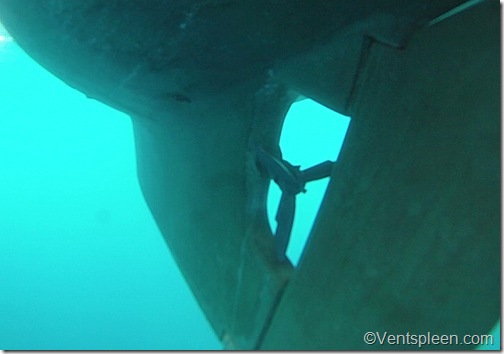
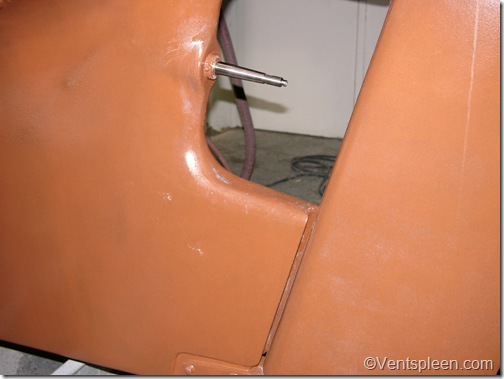
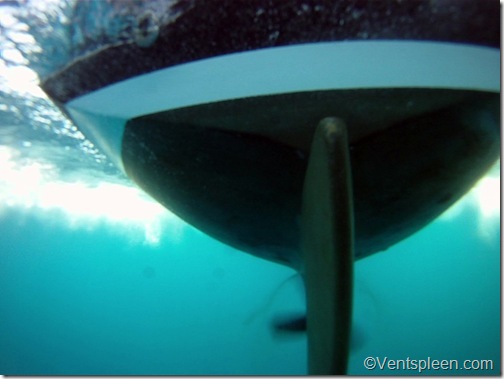
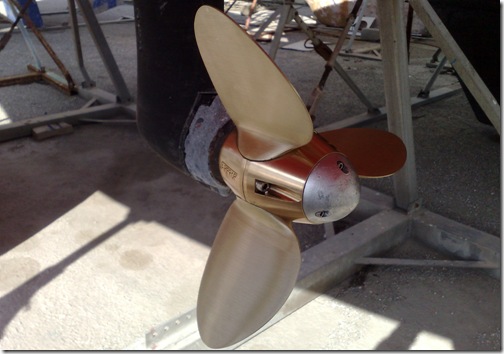
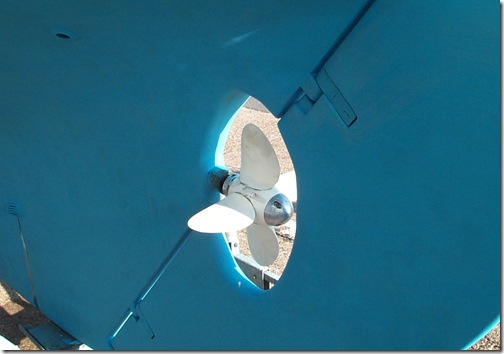
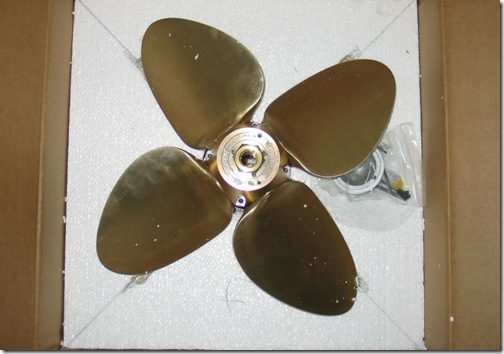
Very comprehensive! I would be interested knowing how the 4 blade variprop works out on your boat. Good luck!